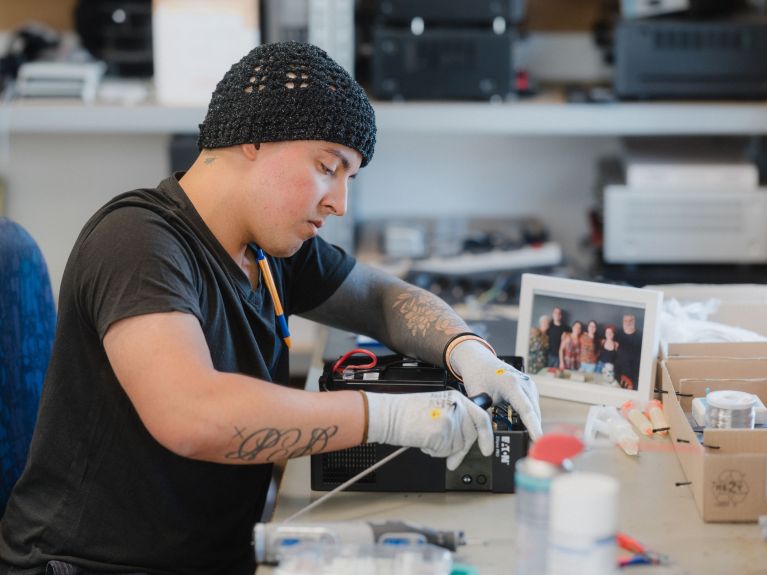Electronics experts from Brazil: a new home in Germany
How the “Hand in Hand for International Talents” project is opening up long-term prospects in Germany for people like Diego Camilo.

“Germany has a great reputation in the field of technology and electronics. That was a big reason for me to come here,” says the electrical engineer Diego Camilo, who in 2023 moved from Sao Paolo to Thuringia in eastern Germany. Camilo was connected with his new employer by the “Hand in Hand for International Talents” project, through which the German Chamber of Commerce and Industry (DIHK) and the Federal Employment agency recruit skilled and qualified workers. Camilo works for a firm that manufactures and maintains electrical equipment for commercial clients. “It was the logical next step in my career,” he reflects.
Before making the move to Germany, Camilo had worked in repairs and prototype production for 15 years. “Long before I moved to Germany I had been really interested in the country. I had travelled around Germany and stayed with a host family, and I had always been fascinated by German history and culture.
It’s about taking a long-term view.
That’s why he was a good fit for the Hand in Hand for International Talents scheme.” Participants in the programme must:
- hold a vocational training qualification
- have at least two years’ professional experience
The programme is looking for skilled workers in the following industries:
- electrical engineering
- IT
- metal manufacturing and processing
Those applying for the programme must also be able to demonstrate that they can see themselves living and working in Germany permanently. “It’s about taking a long-term view,” says Project Lead Anine Lindner at the DIHK. The German-Brazilian Chamber of Commerce in Sao Paolo identifies suitable candidates, primarily through social media, and holds events to share information. Vocational education institutions and their alumni networks also raise awareness about opportunities to work in Germany.
“Online speed dating” to introduce employees and employers
If a skilled worker is accepted onto the scheme, they are introduced to a number of potential employers at events such as “online speed dating” sessions during the monthly Recruiting Days. If both sides are interested, the applicant will meet a representative of the business for an online job interview. For Camillo, things worked out well and both parties felt they could work together.
Since then, Camilo has settled into life in Germany. He had already started learning German in Brazil. Hand in Hand for International Talents helped him get official recognition for his Brazilian professional qualifications and also assisted him with the visa application process.
A colleague met me at the station when I arrived and we have gone on to become friends.
When participants in the programme arrive in Germany, there are named colleagues in their company to provide assistance and help them integrate. Camilo relates how, “A colleague met me at the station when I arrived and we have gone on to become friends. Many people helped me find a place to live and showed me how things work here in Germany.”
DIHK Project Lead Lindner observes, “Initially, many applicants come to Germany alone and their family members follow on later. Often, their husbands or wives are skilled workers too, and they find jobs here.” The Hand in Hand for International Talents scheme is keen to help bring families to Germany, she explains.
Also on board: India, Vietnam, Philippines
The Federal Ministry for Economic Affairs and Energy is funding the pilot project up to the end of 2027. The primary points of contact in the pilot countries for skilled workers are the German Chambers of Commerce Abroad in Brazil, India, Vietnam and the Philippines. When a business signs a contract with a skilled worker, it pays part of the cost. The skilled workers do not face any costs themselves.


